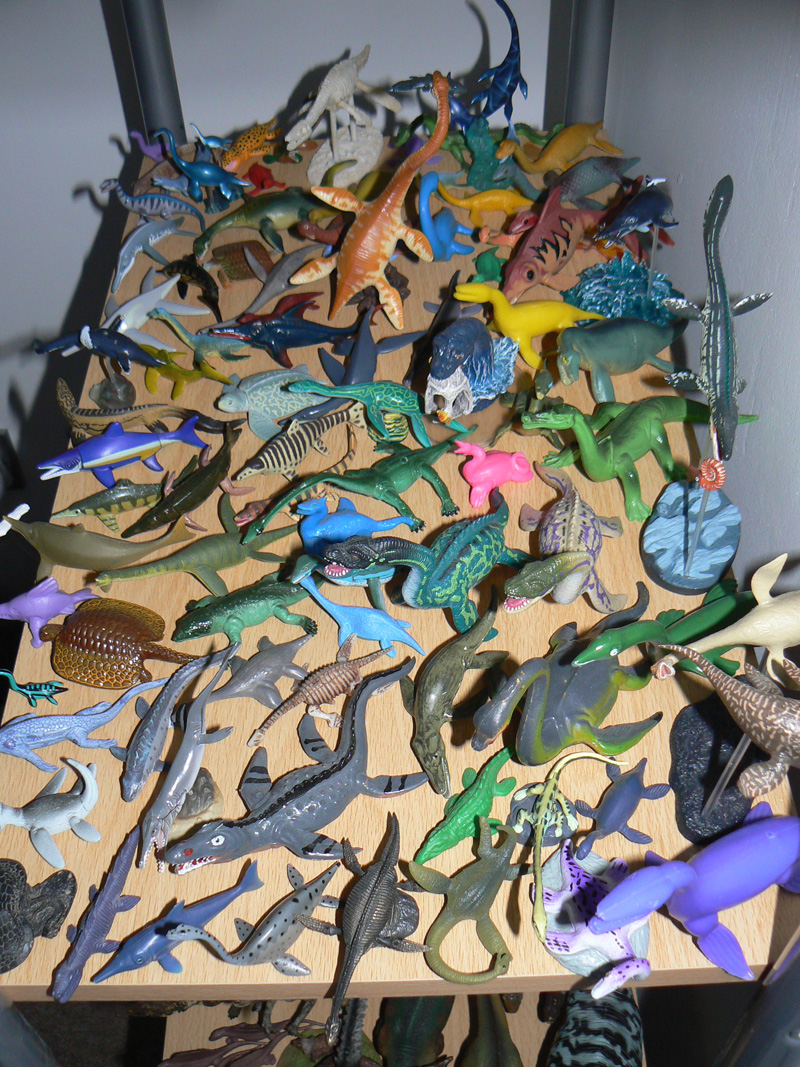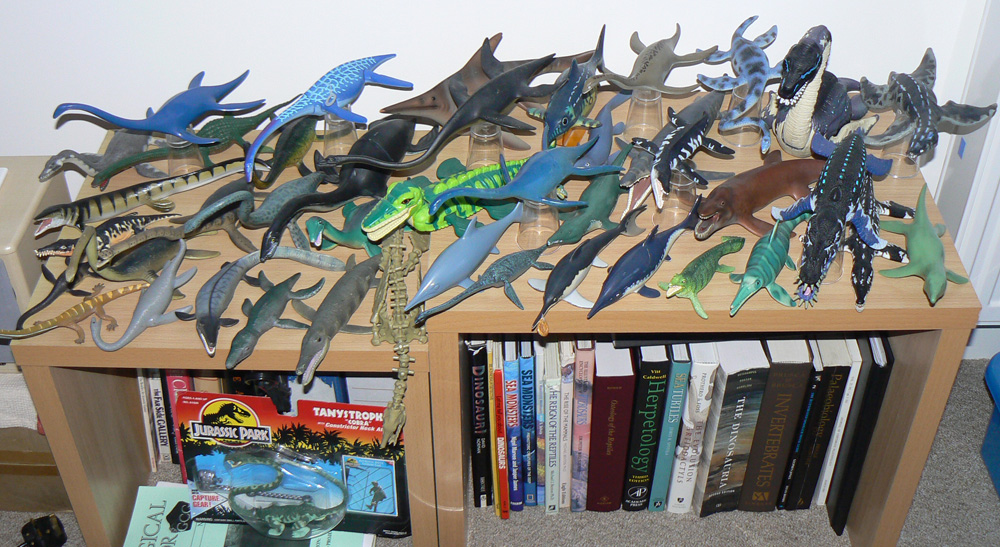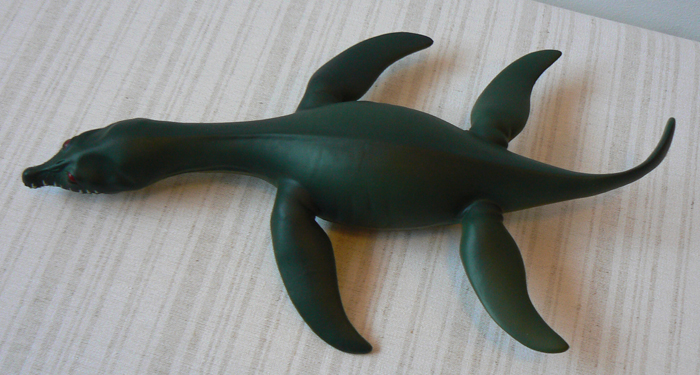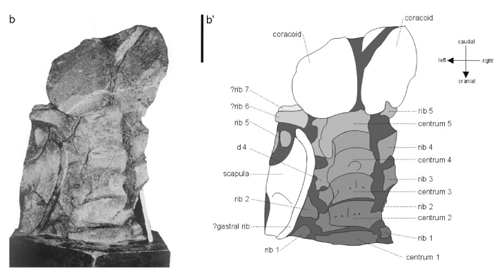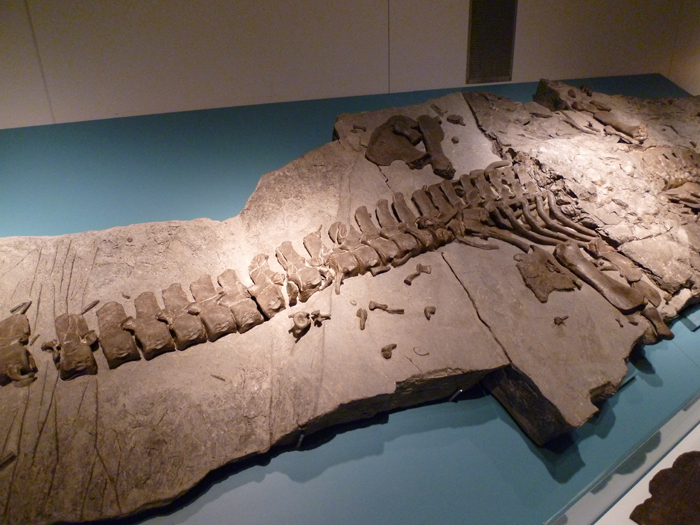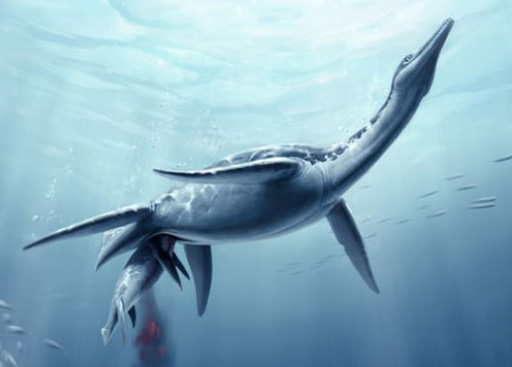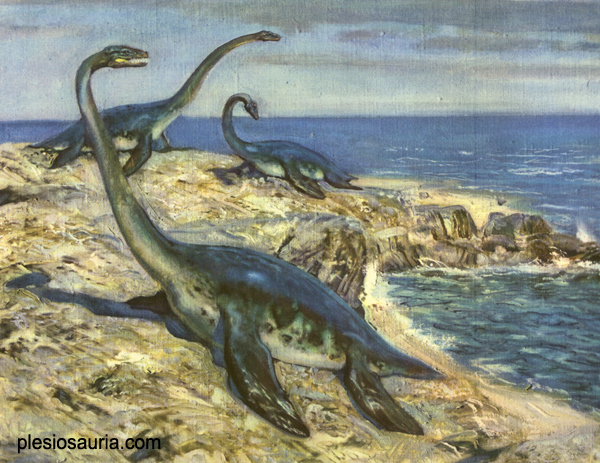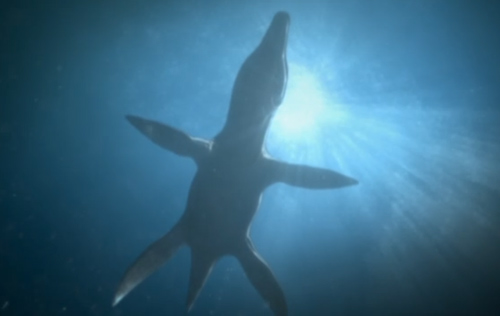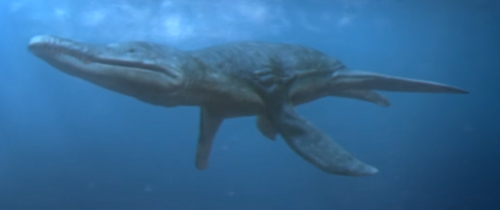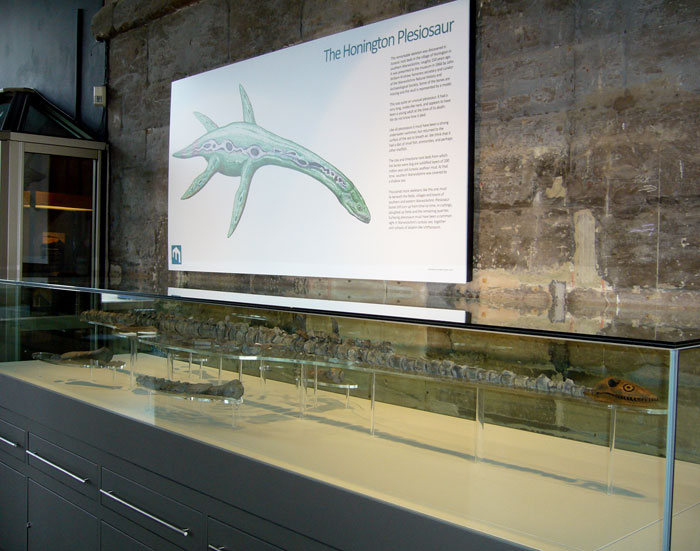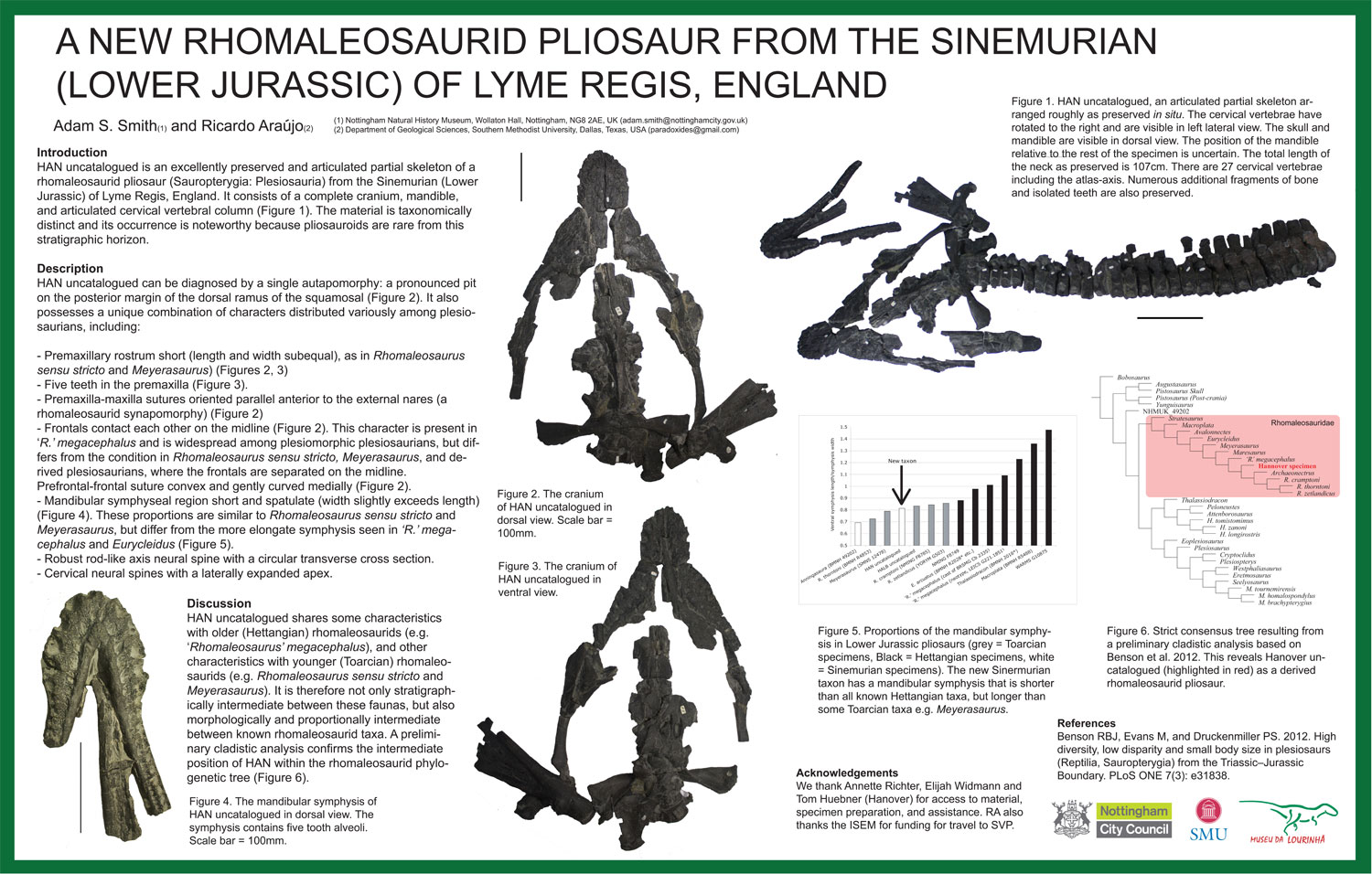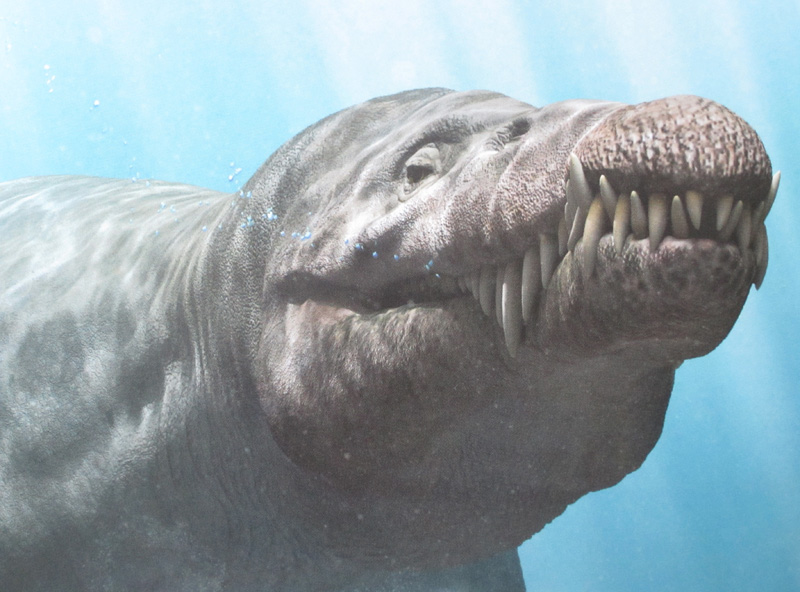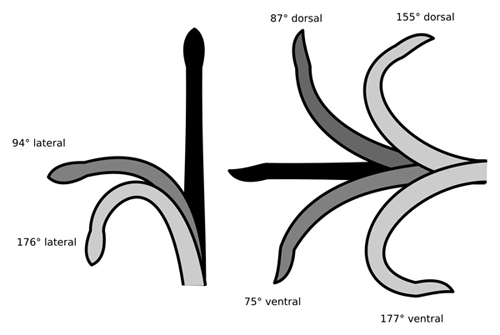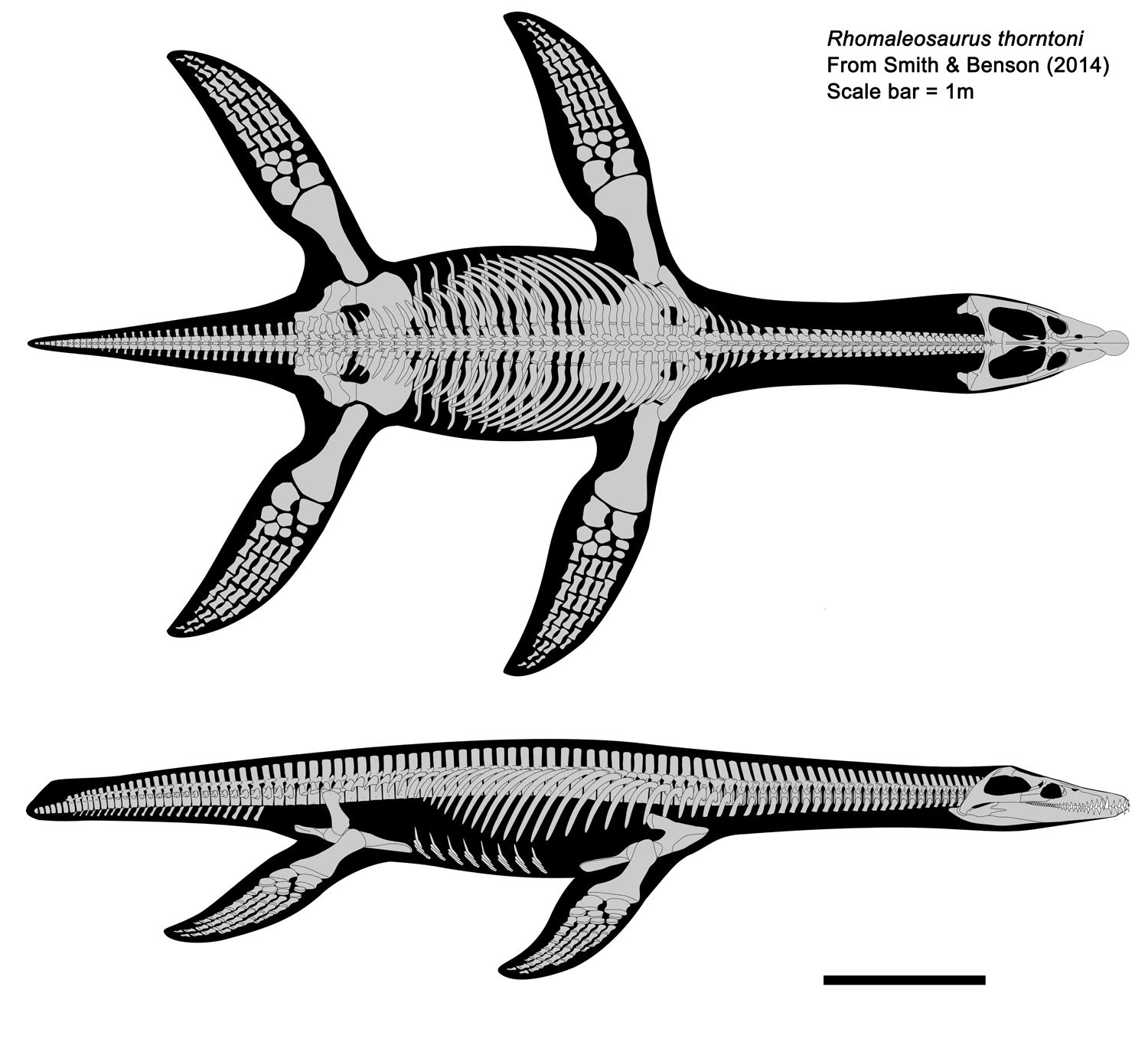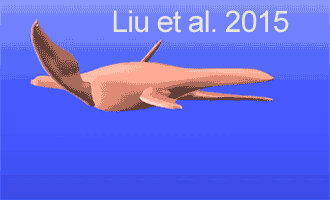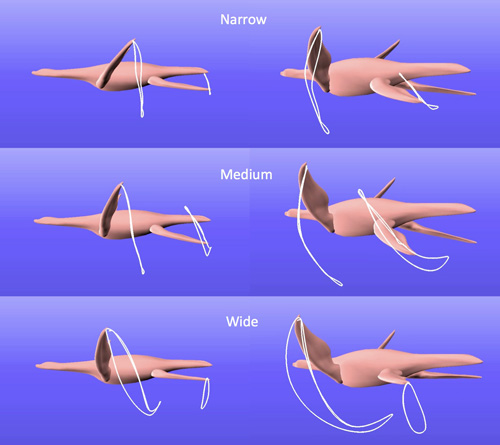So, time for more Planet Dinosaur plesiosaurs… In part 1 of we familiarised ourselves with the taxonomy and appearance of the plesiosaurian stars of the fourth episode of the BBC’s Planet Dinosaur, ‘Fight for Life’. Now we’re all set up to pick apart, with ruthless abandon, the animators’ painstaking efforts to bring these animals to life.
![Predator X Planet Dinosaur]()
Predator X. We're going to need a bigger blog. Copyright BBC.
Plesiosaur swimming is an active area of research and frankly we don’t know exactly how they swam. There are some fundamental uncertainties in our understanding of plesiosaur locomotion, in particular, how did the four limbs move relative to each other? Sure, we might also be off in our estimations of dinosaur gaits too, but at least we have the footprint evidence to understand the basics. For example, theropod dinosaurs like Allosaurus, which also appeared in this episode, put one foot in front of the other. Yet the animators still didn’t quite manage to capture this satisfactorily as to my eye the walk cycles in the Planet Dinosaur dinos are pretty wooden. So, with this in mind, what chance did the plesiosaurs have?
Well, I’m probably overstating the point. It is true that we don’t know exactly how plesisoaurs swam, but we do have a good understanding of the limb strokes in general, and we know how they didn’t swim. So let’s start there. Derived aquatic animals generally swim either by undulating their body (e.g. crocs, dolphins etc.) or by keeping their body sturdy and using their limbs (e.g. turtles, penguins). Plesiosaurs are in the latter category and their skeleton is constructed accordingly to resist flexibility. They have tightly articulating dorsal vertebrae, robust ribs, and a strong rigid ventral skeleton consisting of flat plate-like girdles, bridged by a strong mesh of gastralia (belly ribs).
To my distress, some early movement cycles of the Kimmerosaurus included not only a limb-based phase, but also a wriggling phase with long lateral undulations of the whole body, with the flippers pulled in flush to the flanks. In this regard, the Planet Dinosaur plesiosaurs originally wanted to have their cake and eat it. Thankfully these side-to-side wiggling phases, and also an up-down wiggling phase, didn’t appear in the final show. However, there is still a little too much dorso-ventral flexibility in the plesiosaur bodies on occasion. The Kimmerosaurus sometimes appear rather too bendy, and in one scene the pliosaur pretty much breaks its own spine, but I was pleased to see these deviations kept to a minimum.
It is generally agreed that the plesiosaur flipper stoke was essentially a modified form of underwater flying with a major up-down component and minor back-forth component. They were not used to row and it is unlikely that the flippers could be pulled back to be flush with the flanks of the body, even though they do this every now and again in the show. The limb-stroke of the forelimbs also looks a bit off at times in Planet Dinosaur. It is my understanding that the digital models are rigged with approximate points of flexibility – they don’t have anatomically correct skeletal anatomy inside – so it is only to be expected that the points of joints and range of motion may not always be spot on. It’s also worth bearing in mind than animators are not biologists, yet they’re ultimately responsible for the construction of biological critters.
When I saw the trailer for Planet Dinosaur I noticed the flippers in the pliosaur being pulled back almost flush with the body and feared for the worst. This happens in the scene when the pliosaur comes to blows with the Kimmerosaurus. But this was a one off and for the most part the pliosaur is cruising around with healthy deep limb strokes. Plesiosaurs may have changed their gait depending on the the velocity and maneuverability they wished to achieve, so it is also reasonable to suppose that all four limbs sometimes moved in unison for a burst of speed, as also depicted in the show. Overall, I thought the Kimmerosaurus‘ elegant prancing and dancing, twisting and turning, was wondrous. It would be unfair, and perhaps premature given our current state of understanding, to pick on it too much.
I had some problems with the interactions between the animals and their underwater environment, the water resistance wasn’t always convincing. At times the plesiosaurs seemed to move via some sort of invisible jet propulsion. Either that, or the momentum being generated from the limb stokes was overestimated. This might be put down to limitations in the technology, and I suppose there is a certain amount of intuition required for perfecting these details. similar explanation could also be invoked to explain why some of the dinosaur walk cycles in the series don’t always cut it when it comes to mass and momentum.
A quick note on that characteristic feature of the plesiosaur, the long neck, which was correctly restored as a relatively inflexible structure. Not a swan-like pose in sight, and no graceful necks arching out of the water. Other recent documentaries (e.g. Sea Rex 3D) just couldn’t resist including such outdated but iconic imagery, presumably against better advice. The evidence for plesiosaur feeding habits from the gutter-like trace fossils, or Lebensspuren (for that it their proper name), was discussed by Darren Naish on the old version of his Tetrapod Zoology site. These structures might have been produced by plesiosaurs, they might not, but it is a reasonable suggestion that fits with other evidence from stomach contents (McHenry et al., 2005).
![Kimmerosaurus Planet Dinosaur]()
Kimmerosaurus - The Jurassic vaccume cleaner. Copyright BBC.
On several occasions in the program the plesiosaurs break the surface, where, dowsed in harsh sunlight, I’d be hard pushed to tell whether the splashes are CGI or real (if I didn’t already know). These scenes were really excellently excecuted. The pliosaur comes up for air at one point and snorts out a powerful jet of water spray from its external nostrils. It isn’t certain that plesiosaurs breathed through their tiny external nostrils, especially if they employed the method of underwater olfaction explained in the show (these plesiosaurs want to have their cake and eat it again!), but, well, why not, it looked nice didn’t it!
The scientific exposition sections included some dodgy versions of my Rhomaleosaurus reconstruction as a stand in for Predator X, which was therefore anatomically incorrect for a pliosaurid. I believe that the Kimmerosaurus illustration was also based on my Rhomaleosaurus reconstruction. The tooth mark evidence in the skull of a plesiosaur comes from an elasmosaurid specimen formerly referred to the nomen dubium ‘Woolungasaurus‘, and now known as Eromangasaurus australis (following some confusion resulting from two researchers accidentally stepping on each others toes a little and publishing reviews of the material almost simultaneously – the specimen had a short stint as Tuarangisaurus australis and Eromangasaurus carinognathus) (Kear, 2007). Anyway, it certainly isn’t Plesiosaurus as the reconstruction was mysteriously labelled in the show. The interpretation of the bite marks is pretty speculative as who knows for sure the position of the the animal in the water column? But pliosaurs sometimes ate long-necked plesiosaurs, that is certain.
![Predator X Planet Dinosaur]()
A hungry Predator X wrestles with a sand bank in search for tasty Kimmero-morsels. Copyright BBC.
As scientists, palaeontologists have the luxury of not having to commit to any single hypothesis. We can say without shame that we don’t know, at least not with certainty, how plesiosaurs hunted, how they breathed, how they swam. We can interpret evidence tentatively and you’ll have noticed the frequent use of non-commital language in this review such as ‘probably’ and ‘unlikely’. But this doesn’t help artists, script writers or animators who, charged with the task of restoring these long-dead beasties, are forced to plump for one option of the other (under the format used by Planet Dinosaur at least). With all the pitfalls presented to them along the way, I think the Planet Dinosaur team did a sterling job bringing Predator X and Kimmerosaurus back to life. And no, I’m not being apologetic, or sympathetic, just because I was involved. I’m really enjoying this series and look forward to the other episodes.
References
Kear, B. 2007. Taxonomic clarification of the Australian elasmosaurid genus Eromangasaurus, with reference to other austral elasmosaur taxa. Journal of Vertebrate Palaeontology, 27, 241-246.
McHenry, C., Cook, A., and Wroe, S. 2005. Bottom feeding plesiosaurs. Science, 310, 75.
